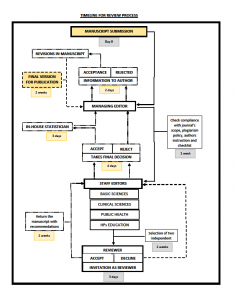Life and Science is an open-access journal. We are licensed under Creative Commons Attribution-NonCommercial 4.0 International License (CC BY-NC 4.0). The readers are allowed to download, print or search links to the full text of the articles or use them for any other lawful purpose except for commercialization, provided the author and the journal are credited and cited. Life and Science is committed to following best-practicing guidelines on editorial independence, the code on good publication practices produced by the Committee on Publication Ethics (COPE), and recommendations by the International Committee of Medical Journal Editors (ICMJE).
| Falsification of data | Ranging from fabrication to deceptive selective reporting of findings and omission of conflicting data, or willful suppression and/or distortion of data. |
| Plagiarism | The appropriation of the language, ideas, or thoughts of another without crediting their true source, and representation of them as one's own original work. |
| Improprieties of authorship | Improper assignment of credit, such as excluding others, misrepresentation of the same material as original in more than one publication, inclusion of individuals as authors who have not made a definite contribution to the work published; or submission of multi-authored publications without the concurrence of all authors. |
| Misappropriation of the ideas of others | An important aspect of scholarly activity is the exchange of ideas among colleagues. Scholars can acquire novel ideas from others during the process of reviewing grant applications and manuscripts. However, improper use of such information can constitute fraud. Wholesale appropriation of such material constitutes misconduct. |
| Violation of generally accepted research practices | Serious deviation from accepted practices in proposing or carrying out research, improper manipulation of experiments to obtain biased results, deceptive statistical or analytical manipulations, or improper reporting of results. |
| Material failure to comply with legislative and regulatory requirements affecting research: | Including but not limited to serious or substantial, repeated, willful violations of applicable local regulations and law involving the use of funds, care of animals, human subjects, investigational drugs, recombinant products, new devices, or radioactive, biologic, or chemical materials. |
| Inappropriate behavior in relation to misconduct | This includes unfounded or knowingly false accusations of misconduct, failure to report known or suspected misconduct, withholding or destruction of information relevant to a claim of misconduct and retaliation against persons involved in the allegation or investigation. |
 This work is licensed under a Creative Commons Attribution-NonCommercial 4.0 International License (CC BY-NC 4.0).
The journal does not charge any fee for full text and reuse is only permissible with the following terms:
This work is licensed under a Creative Commons Attribution-NonCommercial 4.0 International License (CC BY-NC 4.0).
The journal does not charge any fee for full text and reuse is only permissible with the following terms:

Life and Science is recognized by Pakistan Medical and Dental Council (PM&DC), Islamabad, Pakistan
All the articles published in Life and Science are licensed under a
Creative Commons Attribution-NonCommercial 4.0 International License